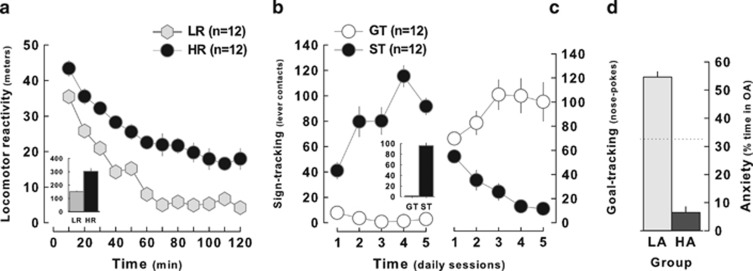Figure 3.
Inter-individual differences in locomotor reactivity to novelty, sign-tracking, and anxiety. (a) High responders (HR, n=12) displayed slower locomotor habituation than low responders (LR, n=12) to a novel unescapable environment (insert: total traveled distance during the session). (b) Sign-trackers (ST, n=12) spent more time interacting with the food-associated stimulus (left) whereas goal-trackers (GT, n=12) displayed more interest for the magazine (right). The insert represents the average number of press on the CS lever. (c) High anxious rats (HA, n=12) spent less time in the open arms (OA) of the elevated-plus maze (EPM) than low anxious (LA, n=12) rats.

